In 1923 President Warren G. Harding drove a golden spike just north of Nenana, completing the Alaska Railroad’s main line. The line extended 470 miles from Seward to Fairbanks, and is still the major backbone of the Alaska Railroad today. Over the years since there have been various additions and branches added, from the 28 mile Eilson Branch extending from Fairbanks to the Eilson Air Force Base, to the short Anchorage International Airport Branch which connects the railroad to the airport and is used occasionally for cruise ship passengers. Today, however, we turn our focus onto one of the railroad’s most important branches, the Whittier Branch.
Completed in 1943, the Whittier Branch connected the Alaska Railroad’s main line to the ice-free port of Whittier. Though a branch to Whittier had been considered for years prior, the project only came to fruition because of World War II. Whittier was not only a shortcut compared to the railroad’s other ice-free port in Seward, reduced exposure of ships to Japanese submarines, and was harder to bomb by plane because of the frequent bad weather.
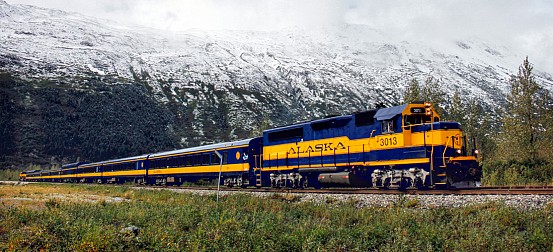 Â
 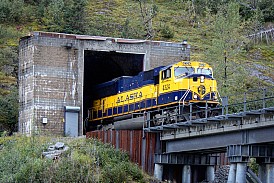 Â
 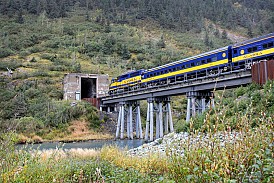 Â
 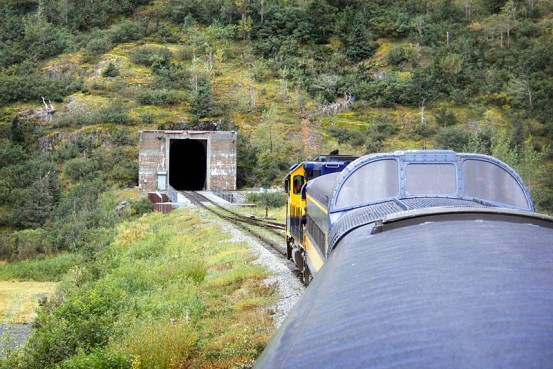 Â
 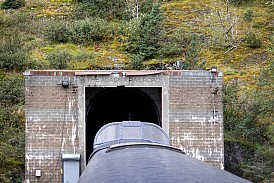 Â
 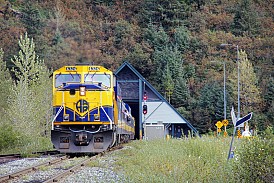 Â
  Â
  Â
 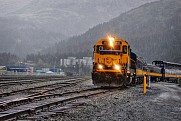 Â
 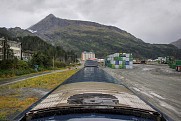 Â
 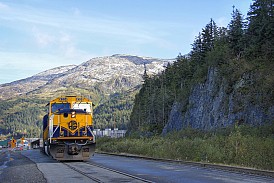 Â
 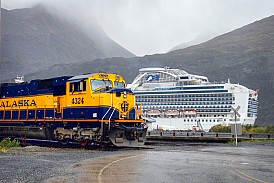 Â
 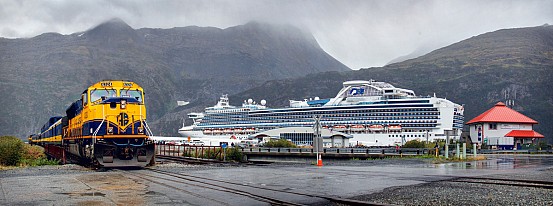 Â
 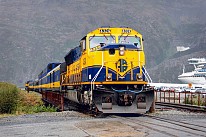 Â
  Â
 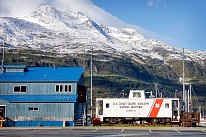 Â
  Â
 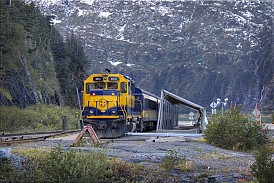 Â
 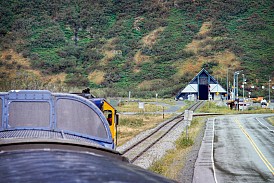 Â
 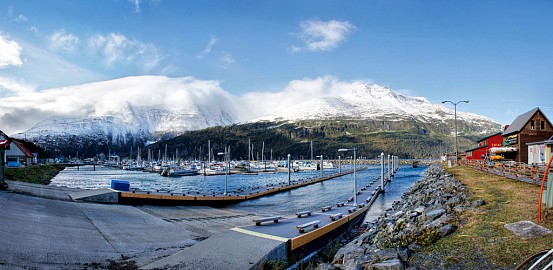 Â
 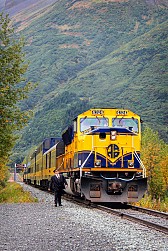 Â
 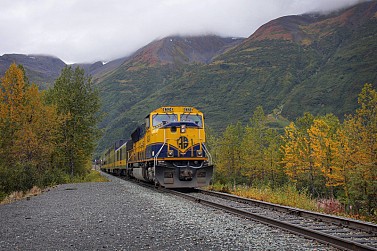 Â
 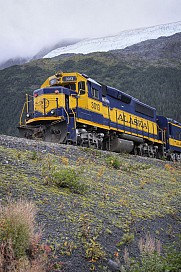 Â
 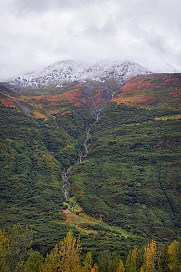 Â
 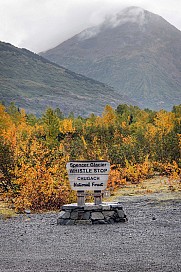
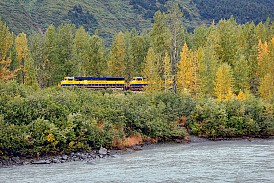 Â
 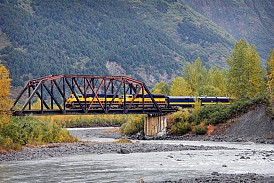 Â
  Â
 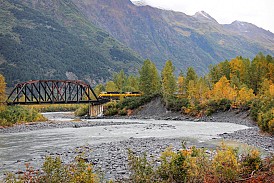 Â
 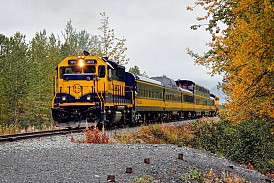
On the route of the Glacier Discovery – visiting Whittier and the flag stop at Spencer Glacier.
The most notable characteristic of the branch are the two tunnels used to pass through the mountains surrounding Whittier. A one mile tunnel was needed to get through Begich Peak, and a 2.5 mile tunnel passed through Maynard Mountain. While the shorter tunnel exists much as it did when it was first constructed, the longer tunnel has had extensive work to allow cars and trucks to pass through.
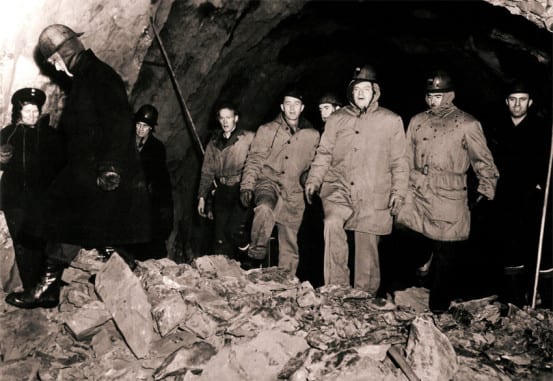
Col. Benjamin B. Talley, commander of the U.S. Army Corps of Engineers in Alaska (second from right) and Lt. Gen. Simon B. Buckner Jr., commander of the Alaska Defense Command (third from right), enter the Whittier Tunnel during a holing through ceremony Nov. 20, 1942. Photo from the US Army Corps of Engineers.
Gone are the days where Whittier was just a military port – today it is an attractive ingress to Alaska used by boaters, freight ships and cruise liners. But up until the late 1990s Whittier was not accessible by car. The Alaska Railroad operated a shuttle service where cars could be transported by flatcar to Whittier, but it was not the most ideal option. While constructing a new highway over the mountain, or constructing another tunnel were all considered, the most cost effective solution was to modify the Alaska Railroad’s existing tunnel to allow road vehicles to traverse the mountain into Whittier.
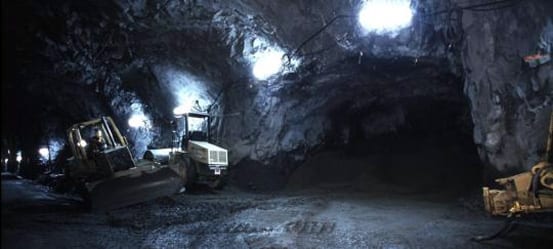
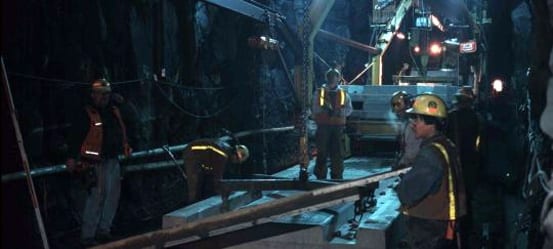
Construction work to convert the railroad tunnel into a dual rail/highway tunnel. Photos from Hatch Mott McDonald.
Completed in June of 2000, the modified tunnel is the longest dual purpose rail and highway tunnel in North America. Built to endure the harsh Alaskan climate, the tunnel is able to operate in temperatures down to -40°F, winds of 150 MPH, and the portal buildings are able to withstand avalanches. Trains are still an important part of the traffic using the tunnel, and it employs a computerized traffic control system to regulate both vehicular and rail traffic in both directions. Besides special cruise ship trains, Alaska Railroad passenger service along the branch and through the tunnels is on the Glacier Discovery train. Freight remains an integral part of the railroad’s operations on the branch, and it is from Whittier that the railroad is connected by barge to Seattle and Prince Rupert, British Columbia.
While plenty of people on YouTube have recorded the journey through the tunnel by car, we get to take a unique journey through by train, thanks to my camera mounted on the front of one of the Alaska Railroad’s locomotives. In typical Whittier fashion, it is raining, but you get the general experience of leaving the port of Whittier, waiting for access into the tunnel, and traversing both tunnels on the branch. Enjoy!
For the folks subscribed to the site via email, you must visit the site to view video features.


That is amazing! YOU are amazing! How did you ever get them to allow you to attach your camera to the front of the engine?
The NRHS chartered the train and Emily asked permission and immediately got it. The Alaska Railroad was wonderful to work with on this event.
Yeah, the folks from the Alaska Railroad were really great. I didn’t think they’d actually say yes!
You have a very intense interest in trains compared to most American females your age. I’m part of a four-man train crew and we had a young lady, new on the job, chauffering us to the hotel after we completed our work. The engineer was wearing “bib” overalls. The young lady wanted to know which one of us shoveled the coal. All of her knowledge about trains was gained from watching “The Polar Express.” She admitted it. That is, simultaneously, sad, scary and worrisome. By the way, Bart Jennings and I are buddies. We’re riding a Kansas City Southern passenger train tomorrow.
I had no idea there was such a thing as a tunnel which alternated between trains and cars. Thanks so much for this!